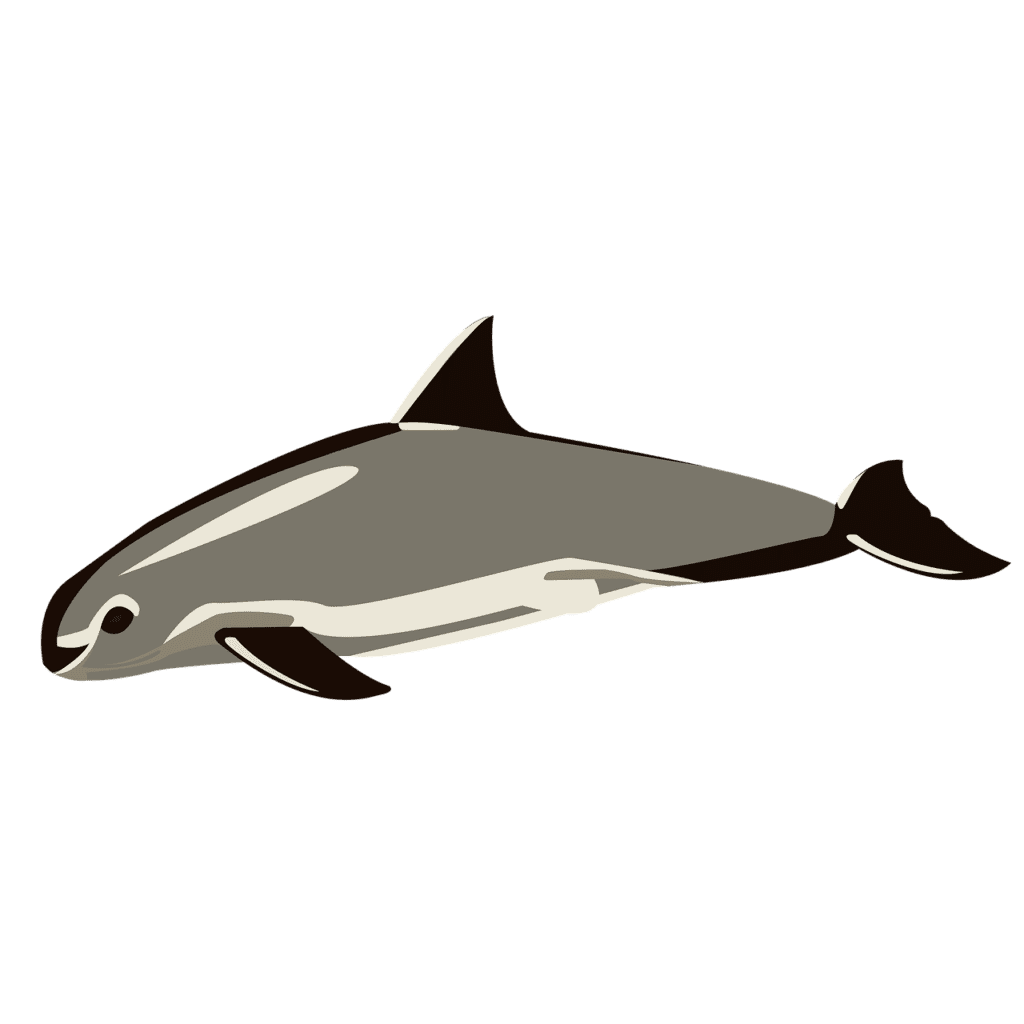The Vaquita is the world’s most endangered marine mammal – and it needs saving! Only a few dozen remain. We must act fast to protect this remarkable species.
Vaquitas live in the Gulf of California, Mexico. But their population has rapidly declined due to illegal fishing practices, like gillnets used to catch another critically endangered fish called the totoaba. These nets unintentionally trap and drown the vaquitas.
To help, governments have introduced strict regulations and banned gillnet fishing in certain areas. But there are still challenges.
For the Vaquita to survive, individuals around the world must become aware of its plight and take action. Support conservation efforts, raise awareness through social media campaigns, and avoid products derived from illegal fishing practices.
Time is running out! Let’s come together and make sure this extraordinary species does not disappear forever. By saving the Vaquita today, we secure a brighter tomorrow for our oceans and all its inhabitants.
Key Takeaways
- The vaquita is the world’s most endangered marine mammal, with only around 10 individuals remaining in the wild.
- The main threat to the vaquita’s survival is illegal fishing, particularly for the totoaba fish, whose swim bladder is highly valued in Asian markets.
- The Mexican government has implemented various measures to protect the vaquita, including a ban on gillnets in the vaquita’s habitat and increased surveillance efforts.
- International cooperation is crucial in saving the vaquita, as the demand for totoaba swim bladders comes primarily from Asian markets.
- Conservation organizations and researchers are working on alternative fishing methods that are less harmful to the vaquita and can still provide livelihoods for local communities.
- Public awareness and education campaigns are essential in raising awareness about the vaquita’s plight and encouraging support for conservation efforts.
- The vaquita’s survival ultimately depends on the collective efforts of governments, conservation organizations, researchers, and the public to address the root causes of its decline and implement effective conservation strategies.
Brief overview of the vaquita species
The vaquita is critically endangered, with only 30 left. Fishing nets are their main threat. They are small porpoises in the northern Gulf of California with black eye patches and dark rings around their mouths.
Reproduction is slow. Females give birth to one calf every two years. This puts them at risk of disappearing.
Saving the vaquita has been a long-term goal. Acoustic monitoring devices help scientists track them. Their behavior and movements can help create protection plans. With collaboration between governments, conservationists, and local communities, there may be hope for the vaquita.
It would be a tragedy if this special species vanished. Even the abyssal creatures wouldn’t find it funny.
The importance of saving the vaquita
The vaquita’s preservation is a must! Its population is quickly declining, so drastic measures are needed to save this unique species from extinction. To combat their downfall, we must address the causes of their decline and put effective conservation strategies in place.
Illegal fishing practices and habitat destruction are two of the largest threats to the vaquita. Fishing regulations must be enforced and sustainable fishing methods should be promoted to reduce entanglement risks. Restoring and protecting their natural habitats is also crucial for their future.
Raising awareness about the vaquita’s plight is also important. Media coverage, public education campaigns, and outreach programs can encourage people to take action and support conservation initiatives. Success in saving the vaquita requires collaboration between government agencies, scientists, local communities, and international organizations.
Time is of the essence. Every day counts and each individual effort matters. You can help safeguard the vaquita’s fragile existence through monetary donations or volunteering your time to conservation projects. Together, we have the power to make a difference and ensure that future generations will be able to marvel at the beauty of this remarkable mammal.
Understanding the threats to the vaquita’s survival

Efforts to protect the vaquita are ongoing. Governments, NGOs, and local communities work together to stop illegal fishing. Rules are in place to stop gillnetting in critical habitats. Projects help keep water flows healthy.
Research is key. Studies track population size and migration patterns, as well as monitoring if conservation efforts are working. In 2005, Mexico created the Vaquita Refuge Area. But, this wasn’t enough.
We need more action from individuals, communities, and governments worldwide. Stricter regulations and more awareness of the critically endangered species must be implemented. To save the vaquita and all vulnerable species, we have to stay dedicated to preserving our planet’s ecosystems.
Spreading awareness about the vaquita
It’s essential to spread awareness about the vaquita. By increasing public knowledge, people can take action and back conservation efforts. Educate yourself first and then:
- Generate content like articles, videos and social media posts to raise awareness.
- Team up with environmental groups and influencers to reach more people.
- Participate in community outreach programs, schools and events to share the vaquita’s issue.
Every single effort makes a difference. The more people understand the vaquita’s challenges, the more likely they are to become its advocates. Together, we can save this rare species from extinction.
Plus, promote responsible fishing practices through workshops or campaigns without harming other marine life. Did you know? According to National Geographic, there are just 30 vaquitas left in the wild. Support conservation organizations to safeguard the vaquita – instead of a secret handshake, we just donate money.
Supporting conservation organizations
Saving the vaquita, the world’s smallest and most endangered porpoise, requires us to support conservation organizations. Here’s what you can do:
- Look into reliable conservation groups that focus on vaquita preservation.
- Donate to these organizations to back up their initiatives. Every bit helps!
- Spread the word about these organizations via social media or word-of-mouth.
- Participate in fundraisers/events organized by these organizations.
- Lend your time and skills to help with fieldwork, research, or admin tasks.
- Advocate for tougher laws and regulations to protect the vaquita & habitat by contacting your local representatives.
Plus, stay up-to-date on the latest news from these organizations to stay connected to their progress. The Sea Shepherd Conservation Society, for instance, patrols the Sea of Cortez (the vaquita’s home) to prevent illegal fishing practices.
Supporting conservation organizations is integral to ensuring a future for the vaquita population. Let’s make a real impact together!
Advocating for stricter fishing regulations
Advocate for tighter fishing regs to save the Vaquita: a critically endangered species. Stronger rules and enforcement will protect their habitat and help their population. Here’s how:
- Investigate existing fishing regulations in Vaquita areas. Analyse their strengths and weaknesses.
- Educate local fishermen and communities about the importance of protecting the Vaquita. Explain how stricter fishing regs can benefit both the environment and their livelihoods.
- Collab with conservation groups to develop strategies for advocating tighter fishing regs.
- Engage in discussions with policymakers and lawmakers. Present data stressing the urgency of tighter fishing regs.
- Launch public campaigns to mobilize support for tighter fishing regs. Use social media, protests or public forums.
- Continuously monitor and evaluate the impact of new fishing regs on Vaquita populations.
- Promote responsible tourism in the Vaquita habitat – it’s a vacation, not a rave! Keep the respect for nature to the max.
With these steps, we can make progress towards advocating for stricter fishing regulations and ultimately have a positive impact on saving the Vaquita. Recent research reveals that tighter fishing regs can reduce Vaquita bycatch mortality rates by 40%.
Promoting responsible tourism in the vaquita habitat

Saving the Vaquita: A must-do for its conservation! We need to raise awareness and educate visitors about why this endangered species should be protected. Here’s how:
- Encourage ecotourism operators: Partner with tour operators who prioritize responsible practices. They can provide informative tours that explain the vaquita’s needs without damaging its environment.
- Implement regulations: Establish and enforce rules for tourists visiting the vaquita habitat. This includes limits on boat speed, noise, and distance from the marine mammals.
- Promote community involvement: Educate and involve local communities in conservation. This way, they can foster a sense of pride and ownership over protecting the vaquita habitat.
It’s essential to balance tourism and conservation. By using responsible practices, we can protect these unique creatures. Pro Tip: Support certified eco-friendly accommodations and businesses that contribute to vaquita conservation during your visit.
Frequently Asked Questions
FAQs about How to Save the Vaquita
1. What is a vaquita?
A vaquita is a small porpoise that is native to the Gulf of California, Mexico. It is the most endangered marine mammal in the world, with less than 15 individuals remaining.
2. What are the main threats to vaquitas?
The vaquita’s main threat is illegal fishing, particularly the use of gillnets to catch totoaba fish. Vaquitas often get entangled in these nets and drown. Habitat degradation, pollution, and climate change also pose additional threats.
3. How can I contribute to saving the vaquita?
You can contribute to saving the vaquita by supporting conservation organizations working to protect them, spreading awareness about their plight, and urging governments to enforce fishing regulations. Avoid buying products derived from totoaba fish or using unsustainable fishing practices.
4. Are there any ongoing conservation efforts for vaquitas?
Yes, several organizations and governments are actively involved in protecting vaquitas. They conduct monitoring and surveillance programs, remove illegal fishing gear, and work with local communities to promote alternative sustainable livelihoods.
5. Can vaquitas be saved from extinction?
While the vaquita population is critically low, there is still hope for their recovery. Conservation efforts, strict fishing regulations, and international collaboration are crucial for ensuring their survival. However, immediate action is needed to prevent their extinction.
6. How can I get involved in vaquita conservation?
You can get involved in vaquita conservation by donating to relevant organizations, volunteering for research or advocacy programs, and spreading the word through social media or educational initiatives. Every effort, no matter how small, makes a difference in saving these precious marine creatures.
Conclusion
The task of saving the vaquita, the world’s most endangered marine mammal, is complex and challenging. Many attempts have been made, yet a solution remains elusive. To tackle this important issue, scientists and conservationists have taken action. They’ve established protected areas, enforced fishing bans, regulated bycatch, and promoted sustainable fishing practices. Governments, organisations, and local communities have also joined forces to raise awareness and support for vaquita conservation.
Still, the situation is dire. The population continues to drop rapidly due to threats such as habitat loss, illegal fishing, and climate change. Urgent action is needed to prevent the extinction of this species. It’s not only important for its sake, but also for the health of its marine habitat. If the vaquita disappears, it could have devastating consequences for other species in the Gulf of California.
Let us remember past extinctions caused by human actions and strive for a better future. Working together, we can ensure sustainability and wellbeing for every living being.
References





